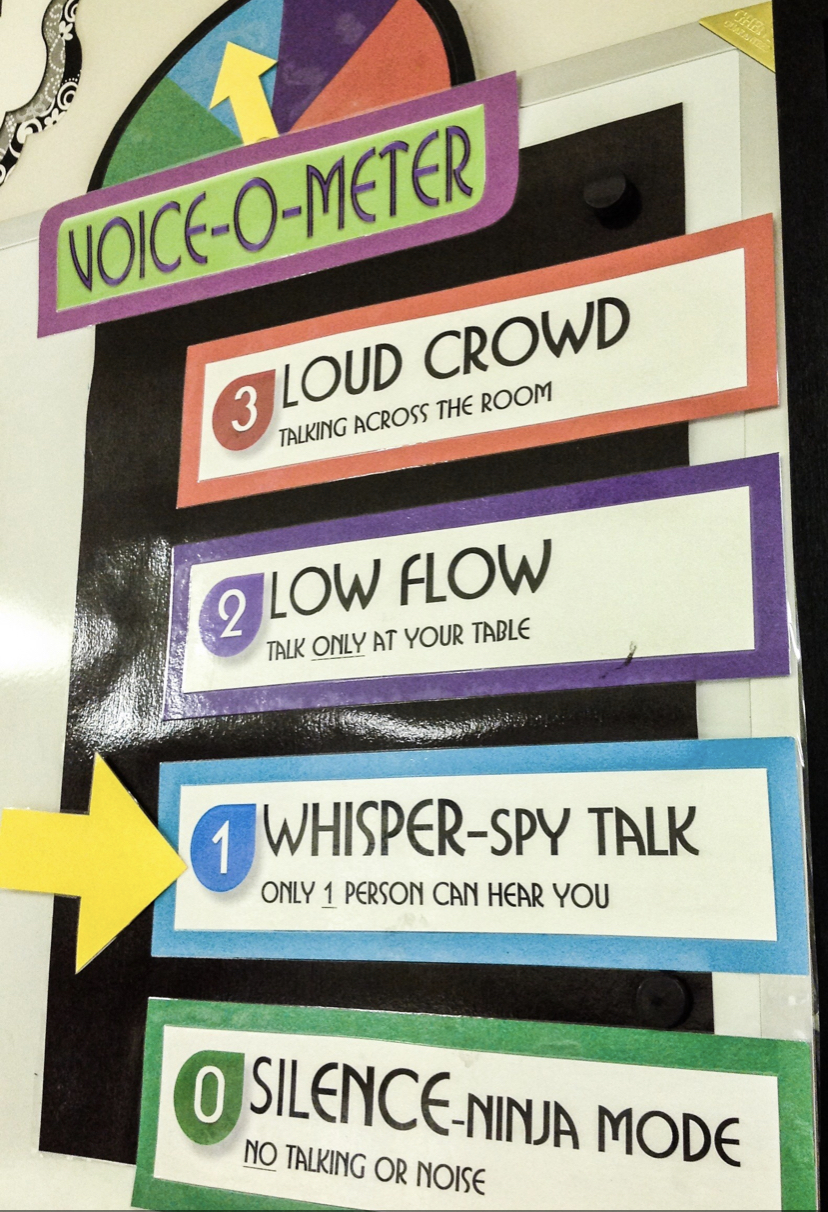Student Contributor: N. Cabiad
 At the beginning of the year, with your class you will discuss the issue of noise level in your classroom. During this conversation, you will explain to students that there needs to be noise levels set in place in order to control the volume in your class. The students can help you come up with the level names, but these levels will be referred to before lessons, work time and group work.
At the beginning of the year, with your class you will discuss the issue of noise level in your classroom. During this conversation, you will explain to students that there needs to be noise levels set in place in order to control the volume in your class. The students can help you come up with the level names, but these levels will be referred to before lessons, work time and group work.
This tool is used to control the noise level in the classroom. Teachers establish at the beginning of the year what each of the four levels means: 0 means that our voices are off and we are listening because this is silent mode. 1 means that only one of the students’ fellow peers can hear what they are saying, this is our whisper mode. 2 means that the table groups are able to talk at a level that only their table groups can hear, this is our low level phase. When students move into group, partner, or individual work, you can refer back to this chart on your wall to set the expectation for the students.
This tool is in the preventative phase because it sets the standard for the students before the behavior or disruption has begun. In order to prevent behaviors and disruptions from happening, we set this expectation for noise level so that the students know how loud they should be using their voices. This is preventative because there are students that will need the room to be at a certain level in order to work. Along with this, us as teachers need to control the volume for the sake of other classrooms and our own selves. Along with this, this tool is collaborative because we get the students’ input when putting them in place at the beginning of the year, but it is something we teachers orchestrate and want in place.
More Information –
Tool Source: Pinterest
https://pin.it/9fFxdCw



My mentor school is in an urban area, and there are 26 students in my 5th grade class. This tool was very easy to prep for. All I needed to do was write the Voice-O-Meter on the board. Since I didn’t have one printed out, I used the board and an arrow to point at what voice level we were currently using. To introduce the Voice-O-Meter, I made it a little bit of fun. For the level 1 whispering/quiet talk, I had them demonstrate to me what that would sound like. The next level “Low flow” I had them show me what talking to their neighbor in an inside voice should sound like. I used my hands as a signal to speak louder or quieter. For the last level, I let them be loud. They were giggling, talking across the room, etc. They thought it was pretty funny! After establishing the tool, we used it throughout the day. Students completely understood their role and followed along quite easily! I had to refer back to our Voice-O-Meter a few times, but they caught on very quickly! My next adjustment to make it better is to permanently place it on the wall! Thanks for the great management idea.
I did this in a rural school district with a class of 24 fifth graders. This was a fairly easy tool to use, prepare for, and teach. There was little involved with preparing, as I just had written the different levels up on the whiteboard. With older kids, it was easy to introduce and teach this to them in the middle of the school year and have them easily understand what was needed and expected for them. I think that if you were to do this with little kids, it would be essential to start these expectations at the very beginning of the year. I think that this was a very easy and fun way to label the voice levels they already know. It was also an easy thing to use because during our lesson I would just point to the different levels that we were going to be using and they all caught on very quickly. It was a very fun thing to do with the students as well because they enjoyed getting to name the different voice levels. This is definitely something that I would want to do in my own future classroom.